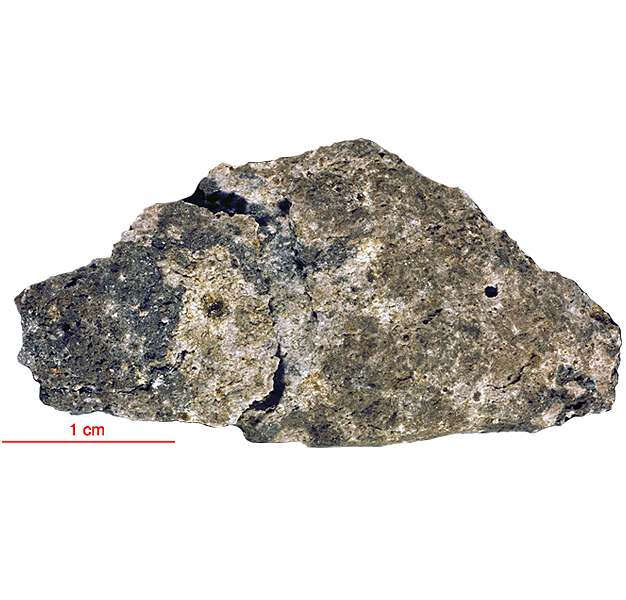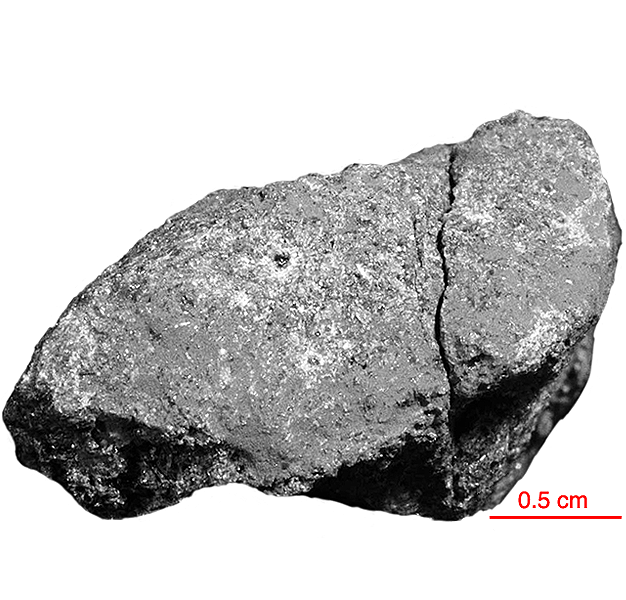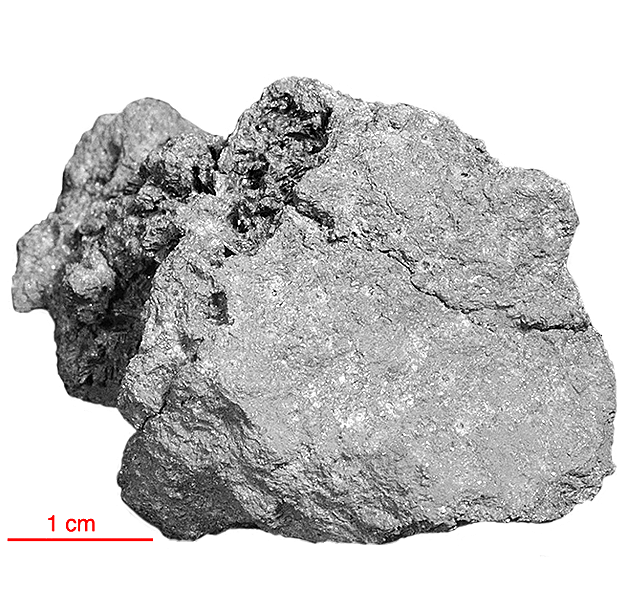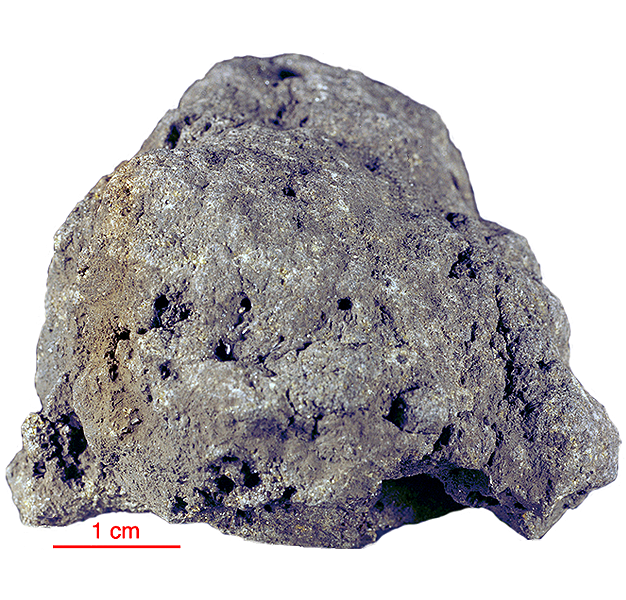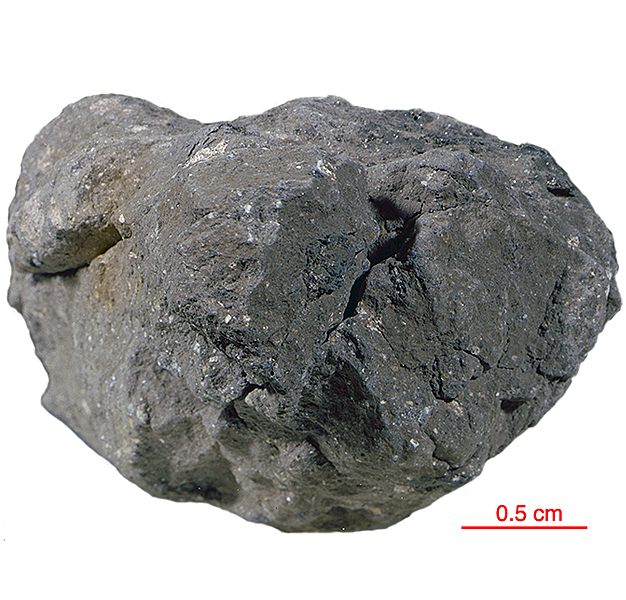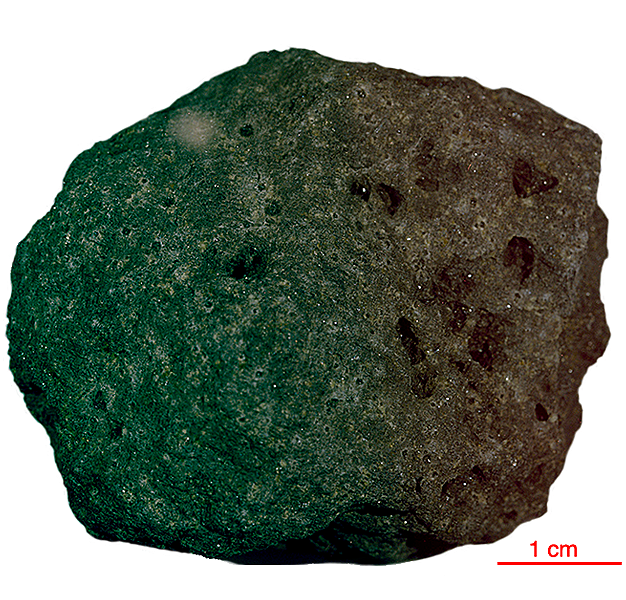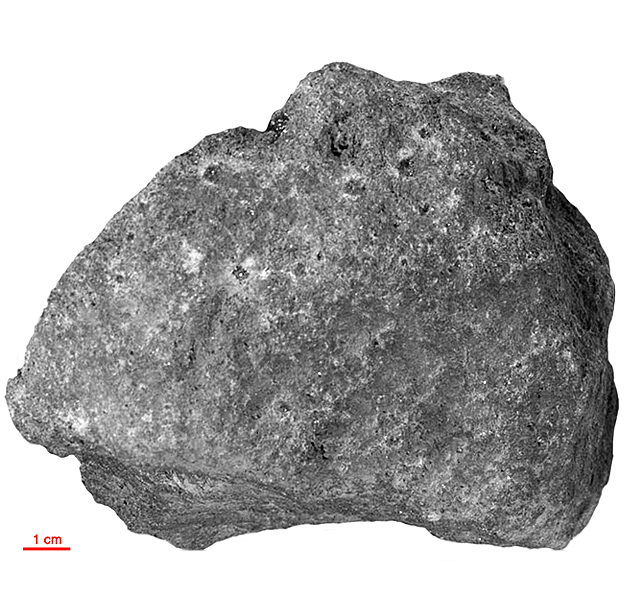
Fact sheet
12018 is an olivine basalt with an apparent accumulation of mafic minerals. It is medium-grained with an average grain size of about 0.4 to 1.0 mm and consists of 70-80% larger olivine and pyroxene crystals set in 20% variolitic matrix. Pyrpoxene crystals are elongate and compositionally zoned. 12018 also contains an association of fayalite-K-rich glass-phosphate that is interpreted as residual melt.
The sample weighed 787 grams before analysis. It has not been dated.
Over the years the resin holding the rock slice to the glass slide has deteriorated and in places appears as brown patches.
Further details of this and other Apollo samples are here: http://curator.jsc.nasa.gov/lunar/
Apollo 12 returned 34 kilograms of samples, including 45 rocks, samples of lunar 'soil', and several core tubes that included material from as much as 40 centimetres below the lunar surface.
Apollo 12 rocks were almost all basalts, with only two breccias in the returned samples. The basalts at the Apollo 12 site formed 3.1 to 3.3 billion years ago, roughly 500 million years later than the Apollo 11 basalts. Overall, there is much less of the element titanium in the Apollo 12 samples than in the Apollo 11 samples, which explains the more reddish colour of this region. The differences in age and chemical composition between the Apollo 11 and Apollo 12 samples demonstrate that mare volcanism did not occur as a single, Moon-wide melting event.
Apollo 12 was launched on 14 November 1969.

